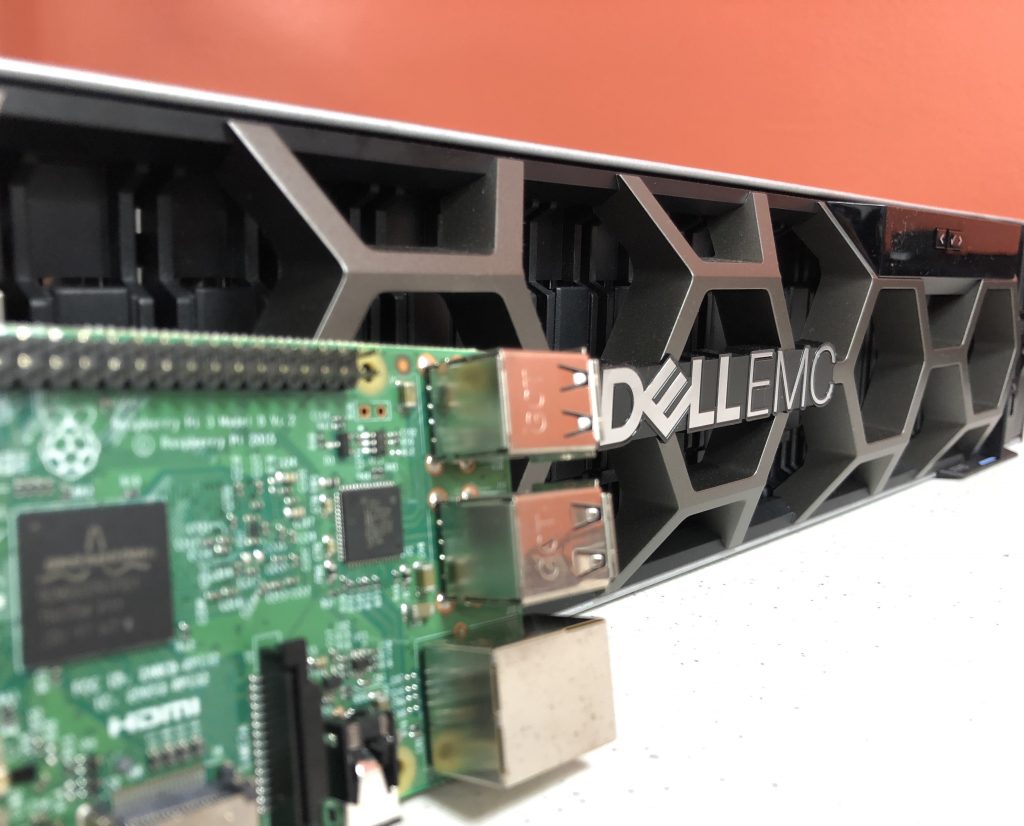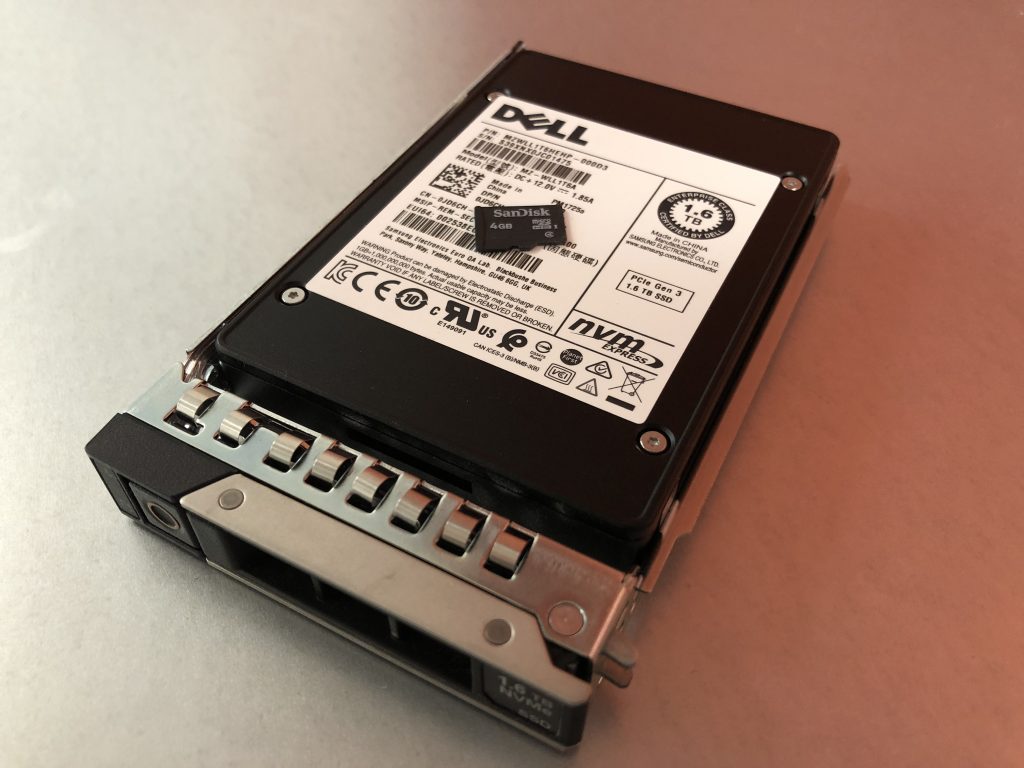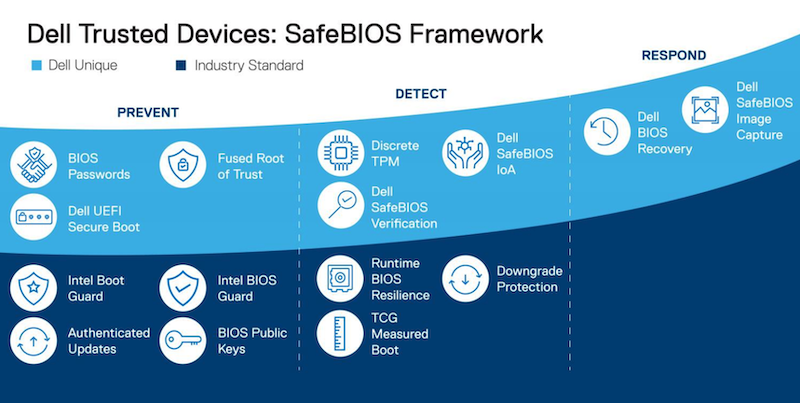We recently received a Dell EMC R7415 server into the Gestalt IT Labs (which is a much nicer way of saying a table with computers on it). Our own Stephen Foskett gave it a once over, and found it to be a formidable piece of kit with impressive management features. We’ve been testing it in the office, but after spending some time with it, I wanted to give it a proper comparison. So of course, I picked a Raspberry Pi as being up to the task.

What?
The Raspberry Pi is a $35 SoC that’s been the darling of the creator and hacker communities since the first generation came out in 2012. The Dell EMC R7415, as equipped in our office, is a 2U single socket server that costs around $20,000. At first blush, they might not seem to have anything in common. But dig a little deeper, and one interesting commonality emerges.
The Distance Between Them
Of course, it’s interesting to look at just how different these little devices actually are:
Memory
The Raspberry Pi Model 3 has a single channel 1GB of DDR3 RAM on the SoC that can’t be upgraded. It’s split between the CPU and graphics core, depending on the 3D and video decoding workloads. It’s enough to decode 1080p video, or run a GUI on Linux.
The R7415 came equipped with 256GB of DDR4. That’s spread out over 8 memory channels, and can be upgraded to 2TB of system memory. By most measures, that’s a lot of memory.
I/O
Here’s the thing about the Raspberry Pi, it has I/O in an academic sense. There are ways to get data in and out of the device, congrats. However, doing so with any alacrity is another matter. Because it lacks any PCIe lanes, all I/O goes out over a single USB 2.0 interface. So storage and networking can be glacial.
Meanwhile the Dell EMC R7415 comes with a surfeit of I/O capability. Thanks to the EPYC platform underlying the server, there are a full 128 PCIe 3.0 lanes available. As a result, the server can support 24 NVMe drives, comes equipped with a dual 10GbE card, and isn’t even close to running out of I/O. For a single socket, the mind almost reels at the possibilities.
Storage
At its $35 base price, the Raspberry Pi comes with no storage, and supports MicroSD cards for system installation. You can add on USB hard drives, but you’re always booting off MicroSD, which caps off at 256GB. RAID support? Lol.

As mentioned above, the R7415 can handle 24 drives on the front, including NVMe. As equipped, our server came with 5 400GB 12Gbps flash SAS drives, as well as two 1.6TB NVMe drives. The included RAID controller can support RAID 0, 1, 5, 6, 10, 50, and 60.
Coming Together
So big deal! Yes an enterprise server that costs 500x more than a Raspberry Pi is also a lot more capable. In fact it’s notable that they have anything in common at all. Of all things, these two devices have one thing in common. To illustrate, let’s look at their CPUs.
The Raspberry Pi 3 has a Broadcom 1.4 GHz 64-bit quad-core ARM Cortex-A53 processor. It’s a notable upgrade from the single core original Pi, but still not going to let you mine Monero or anything intensive.
At the other extreme, the R7415 is build on AMD’s Epyc 7551 processors. Aside from the gobs of PCIe supported, it also comes packed with 32 cores, supporting 64 threads via multithreading. These nominally run at 2GHz, but single cores can be boosted to 3GHz in specific workloads. It’s a remarkably dense bit of silicon.
But the most interesting thing in common is the word that’s left out of the description of either device: Intel. While ARM has had a strong presence in the cheap low-power processor market for some time, Intel has generally been the standard everywhere else. This is especially true on the enterprise side. Since the mid-2000s, it’s been a sea of Intel.
Seeing Dell EMC delivering an AMD-based server is significant. Moreover, this is not a value or specialized workload device. Instead, the Dell EMC R7415 offers an unheard of single socket CPU density in a 2U package, with a wealth of IO for extensibility across a variety of applications. As Stephen pointed out in his review, the server market is largely commodified. That’s what makes AMD’s re-entry to this market even more interesting. The R7415 shows that not only is AMD able to make chips that match Intel at a replacement level, but have a benefit distinct to themselves. Intel’s Xeon lineup has largely coasted on an architectural level the last few years.
Using the Epyc platform, Dell EMC is able to offer a truly novel density that can have real implications for business. On a purely technical level, more cores on a single socket, within a relatively tight power envelope (I never saw the server go north of 300W in testing), means more VMs, DBs, and applications without having to buy additional hardware. Add to this that putting 32 cores on single socket will likely have major cost savings on the licensing end, and the R7415 makes sense from both a technical and business perspective.




